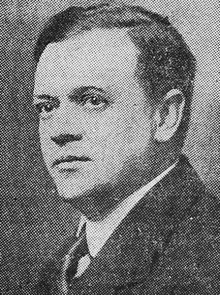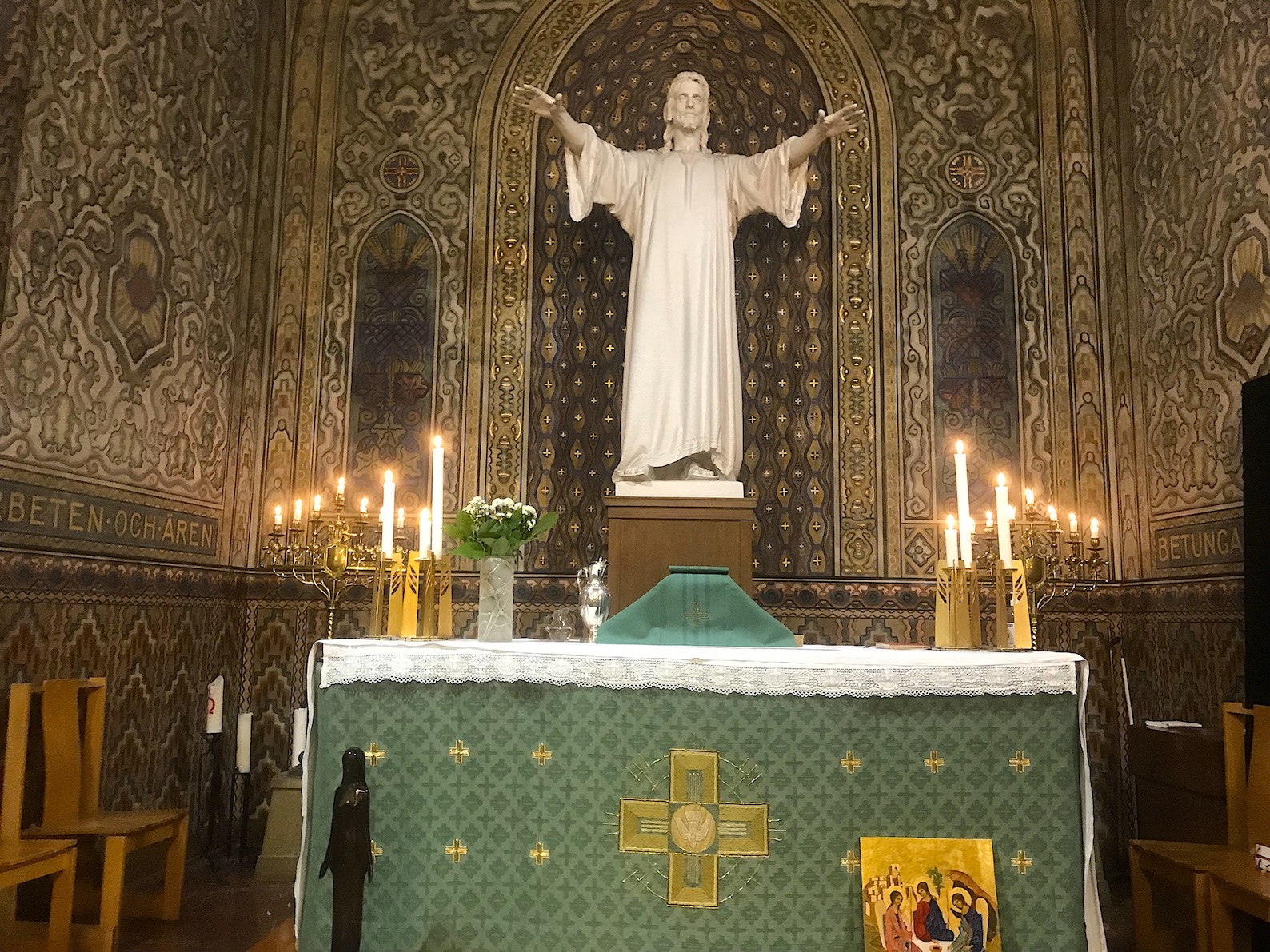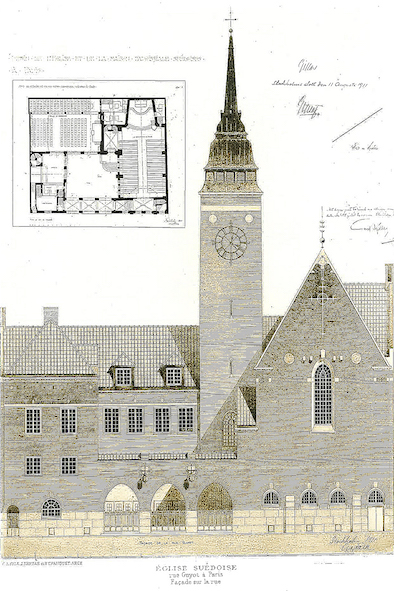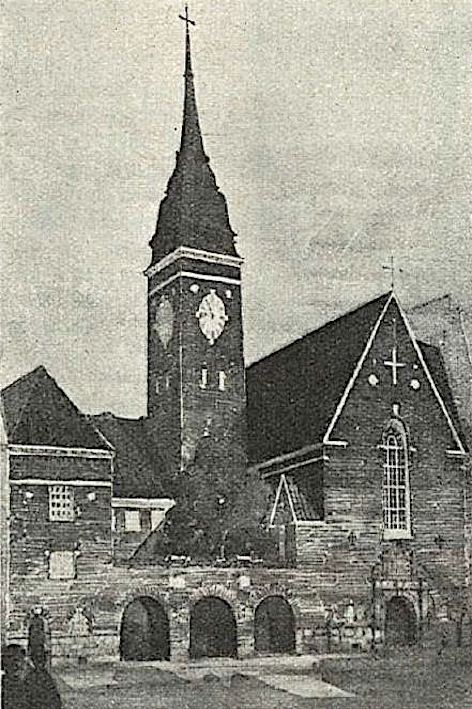In 1907, the Swedish community in Paris, constrained by the limited space of its modest Sofia Temple on Rue d'Ornano, identified a plot on Rue Guyot (now Rue Médéric). This land was purchased by the Swedish state, and a design competition was held among four French architects. As none of the proposals met expectations, a second competition was organized in 1911. It was won by Gustav Adolf Falk (1882–1925), a promising young architect of 27 who tragically passed away at 43. Falk was renowned for restoring the Banérska Palace in Stockholm, home to The Independent Order of Odd Fellows, Sweden's largest lodge. He also designed the Saint-Olov Church in Skellefteå. For the construction of the Swedish Church in Paris, Falk collaborated with Swiss architect Jean Naville and Achille-Henri Chauquet, a municipal architect for the City of Paris. Together, they finalized the project, which received the approval of the King of Sweden. (Naville and Chauquet also built the Protestant Church in the 19th arrondissement in 1921.)
The original plan for the Swedish Church included the Lutheran sanctuary itself, a large meeting room adaptable for use as a gymnasium or folk-dance hall, a library, the Swedish School of Paris, and a dormitory to host indigent Swedes passing through the city. Swedish churches abroad often serve as places of refuge, and this program reflected that ethos. The design comprised three interconnected buildings encircling an inner courtyard, separated from the street by a vaulted gallery adorned with painted decorations. The project was completed in two years with both French and Swedish labor, incorporating materials imported from Sweden, such as bricks, marble, granite, and ironwork.
The wall decorations were entrusted to Filip Månsson (1864–1933), a celebrated Swedish painter, engraver, and decorator influenced by the Arts and Crafts movement. In 1914, Månsson was commissioned to decorate the Council Chamber of Stockholm City Hall, and his distinguished portfolio included works at Stockholm Central Station, Gothenburg Central Station, the Nyköping Courthouse, as well as numerous churches, castles, and city halls. Månsson revived ancient techniques such as lime painting and egg tempera. His style combined symbolic, medieval, and oriental elements within a stylized framework. His treatment of historical references was always distinctive and personal. At the Swedish Church in Paris, Månsson’s artistry was at its zenith. The ribbed ceilings of the gallery along Rue Médéric, painted in ochres, earth tones, and iron oxides, are particularly enchanting. He employed the "al secco" technique, which allows for finer details but is less durable than "al fresco."
For the frescoes in the church choir, Månsson was assisted by two other Swedish painters, Bror Blückert and Erik Anderson.
The church was inaugurated in April 1913 in the presence of King Gustav V, who honored the three architects with the Royal Order of Gustav Vasa.
To provide historical context, the Swedish National Romantic style, which emerged at the end of the 19th century, was part of a nationalist movement in Scandinavia that sought to express local identity in response to the dominance of the Russian Empire. This architectural style rejected Gothic and Classical traditions, drawing instead on Sweden's local construction methods and history. It emphasized natural materials such as granite, brick, and wood. Notable examples include the Masthugget Church in Gothenburg and Stockholm City Hall, begun in 1903 by Ragnar Östberg. The Swedish Church in Paris is the sole representation of this elegant style in France. As Swedish art historian Henrik Lindblad notes, “This church conveys emotional values tied to roots and identity.”
In 1902, Gustav Adolf Falk began studying at the professional construction school of the Stockholm technical school and, from 1903 to 1905, he was a temporary student at the Royal Institute of Technology. He then started working in an architectural firm, but from 1911 until his death, he ran his own business.
His breakthrough as an architect came in 1909 when he won the new competition for a new church building for the Swedish Congregation of Sofia in Paris, which was also realized.
In 1915, he won the architecture competition for the Odinskolan in Gothenburg, which was built according to the proposal the following year. Among Falk's works are several properties on Tysta gatan in Stockholm and apartment buildings in Östermalm.

--> WHO IS LUTHER?





